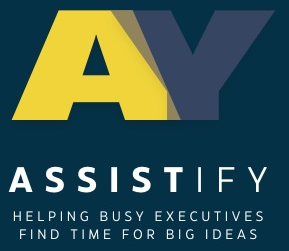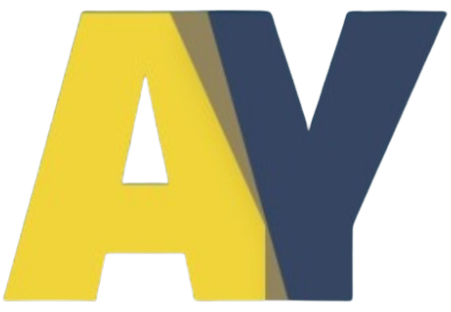In today’s globalized business environment, the importance of cultural fit in building effective global teams cannot be overstated. Imagine your company seamlessly integrating diverse talents from around the world, each member contributing unique perspectives while sharing common values. This harmony isn’t just a dream—it’s a strategic necessity.
Why is cultural fit so crucial? Studies have shown that teams with a strong cultural alignment are more productive, innovative, and cohesive. According to a report by Deloitte, companies with inclusive cultures are six times more likely to be innovative and agile. This means that fostering a strong cultural fit isn’t just about maintaining harmony; it’s about driving your business forward.
For businesses in North America looking to outsource software development, staff augmentation, or web design and e-commerce projects, understanding and prioritizing cultural fit can significantly impact collaboration and productivity. At OpenWorks, we emphasize the importance of connecting North American businesses with top-tier Latin American talent, ensuring that cultural alignment is at the forefront of our staffing solutions.
In this blog post, we’ll delve into the key reasons why cultural fit is essential for global teams. We’ll explore how it impacts collaboration, boosts productivity, and fosters long-term success. Stay with us as we uncover practical strategies to assess and enhance cultural fit within your organization, ensuring your global team thrives in today’s competitive landscape.
Ready to transform your global team dynamics? Let’s dive in.
Understanding Cultural Fit in Global Teams
Cultural fit refers to how well employees align with a company’s values, beliefs, and behaviors. In global teams, this alignment is crucial for effective collaboration and communication. This section will delve into the concept of cultural fit and its significance in a global context.
Defining Cultural Fit
At its core, cultural fit is about how compatible employees are with a company’s culture, goals, and values. According to Indeed, “Culture fit refers to how compatible employees are with a company’s culture, goals, and values. Candidates who are a good cultural fit possess essential hard and soft skills that complement other people in the company.” This means that cultural fit is not about hiring clones but about finding individuals whose values and work styles align with the organization’s mission and ethos.
In a global team, cultural fit is even more critical. It involves understanding and integrating diverse cultural perspectives while maintaining a cohesive work environment. This alignment fosters better collaboration, decision-making, and overall team performance.
Components of Cultural Fit
Several key components contribute to cultural fit in global teams:
- Shared Values: Employees who share the company’s core values are more likely to be engaged and committed. These values guide decision-making and behavior, ensuring that everyone is working towards the same goals.
- Communication Styles: Effective communication is vital in any team, but it becomes even more important in a global context. Understanding and respecting different communication styles can prevent misunderstandings and foster a more inclusive environment.
- Work Ethics: Different cultures have different attitudes towards work, deadlines, and hierarchy. Aligning these work ethics within the team can enhance productivity and reduce conflicts.
Importance of Cultural Fit in Global Teams
The importance of cultural fit in global teams cannot be overstated. When team members share values and communication styles, they are more likely to collaborate effectively and innovate. According to a report by Deloitte, companies with inclusive cultures are six times more likely to be innovative and agile.
Moreover, cultural fit impacts employee satisfaction and retention. Employees who feel aligned with the company culture are more likely to stay longer and be more productive. This reduces turnover costs and helps build a stable, high-performing team.
For businesses in North America looking to outsource software development, staff augmentation, or web design and e-commerce projects, prioritizing cultural fit can significantly impact collaboration and productivity. At OpenWorks, we emphasize the importance of connecting North American businesses with top-tier Latin American talent, ensuring that cultural alignment is at the forefront of our staffing solutions.
The Impact of Cultural Fit on Team Collaboration
In the realm of global teams, cultural fit plays a pivotal role in fostering effective collaboration and boosting productivity. When team members align culturally, they can communicate more effectively, understand each other’s perspectives, and work harmoniously towards common goals. This section delves into how cultural alignment enhances team dynamics, communication, and overall performance.
Enhancing Team Dynamics
Cultural fit significantly influences team dynamics. When team members share similar values and beliefs, they are more likely to trust each other and work cohesively. According to a study by McKinsey, teams with high cultural alignment exhibit a 30% increase in performance compared to those with low alignment. This trust fosters a collaborative environment where members feel comfortable sharing ideas and feedback.
Moreover, cultural fit reduces conflicts and misunderstandings. In a culturally aligned team, members are more likely to understand and respect each other’s communication styles and work ethics. This understanding minimizes friction and promotes a positive working environment. For instance, a team that values open communication will encourage members to voice their opinions, leading to more innovative solutions and better decision-making.
Improving Communication
Effective communication is a cornerstone of successful collaboration in global teams. Cultural fit enhances communication by ensuring that team members have a common understanding of communication norms and practices. A report by Harvard Business Review highlights that teams with strong cultural fit are 50% more likely to communicate effectively, leading to improved project outcomes.
For example, in a culturally aligned team, members are aware of each other’s preferred communication styles, whether direct or indirect. This awareness helps in tailoring messages to avoid misunderstandings. Additionally, shared cultural values often include a common language or set of expressions, which further streamlines communication and reduces the risk of misinterpretation.
Boosting Overall Performance
The positive impact of cultural fit on team collaboration extends to overall performance. Teams with strong cultural alignment are more productive and efficient. According to a study by Deloitte, companies with inclusive cultures are six times more likely to be innovative and agile. This innovation stems from the diverse yet aligned perspectives within the team, which drive creativity and problem-solving.
Furthermore, cultural fit contributes to higher employee satisfaction and retention. Employees who feel aligned with their team’s culture are more engaged and motivated. This engagement translates into better performance and lower turnover rates. For businesses, this means reduced recruitment costs and a more stable, high-performing team.
At OpenWorks, we emphasize the importance of cultural fit in connecting North American businesses with top-tier Latin American talent. By prioritizing cultural alignment, we ensure that our teams collaborate effectively and deliver exceptional results.
Strategies for Assessing Cultural Fit in Global Teams
Assessing cultural fit is crucial for building successful global teams. This section provides strategies and best practices for evaluating cultural fit during the hiring process and beyond.
Actionable Steps for Assessing Cultural Fit
To effectively assess cultural fit, follow these actionable steps:
- Define Your Company Culture: Clearly articulate your company’s values, mission, and work environment. This helps in identifying candidates who align with your organizational culture.
- Craft Targeted Interview Questions: Develop questions that reveal a candidate’s values, work ethics, and communication styles. For example, ask how they handle conflicts or their preferred communication methods.
- Use Behavioral Assessments: Implement tools like personality tests and cultural fit assessments to gain insights into a candidate’s compatibility with your team.
- Conduct Team-Based Activities: Organize group exercises or trial work periods to observe how candidates interact with current team members.
- Seek Diverse Perspectives: Involve multiple team members in the interview process to gather varied opinions on a candidate’s cultural fit.
Tools and Methods Used by Successful Companies
Several tools and methods can aid in assessing cultural fit:
- Personality Tests: Tools like the Myers-Briggs Type Indicator (MBTI) or the Big Five Personality Traits can provide insights into a candidate’s personality and how they might fit within your team.
- Cultural Fit Assessments: Platforms like Culture Amp offer tailored surveys to evaluate how well candidates align with your company’s culture.
- Structured Interviews: Use a consistent set of questions for all candidates to ensure a fair and comprehensive evaluation of cultural fit.
- 360-Degree Feedback: Collect feedback from various stakeholders, including peers and supervisors, to get a holistic view of a candidate’s fit.
Best Practices for Continuous Evaluation
Assessing cultural fit shouldn’t stop at the hiring stage. Implement these best practices for continuous evaluation:
- Regular Check-Ins: Schedule periodic meetings to discuss cultural alignment and address any concerns.
- Employee Surveys: Conduct regular surveys to gauge employee satisfaction and cultural fit within the team.
- Feedback Loops: Establish open channels for feedback, allowing employees to share their thoughts on team dynamics and cultural alignment.
- Adapt and Evolve: Be open to evolving your company culture based on feedback and changing team dynamics.
By implementing these strategies, companies can ensure they hire and retain individuals who align with their cultural values, leading to more cohesive and productive global teams.
Fostering Cultural Fit for Global Team Success
In the interconnected world of business, ensuring a strong cultural fit within your global team is not just beneficial but essential. When team members align culturally, they communicate more effectively, collaborate harmoniously, and drive innovation. This alignment is particularly important for businesses in North America seeking to outsource software development, staff augmentation, or web design and e-commerce projects.
To recap, cultural fit significantly impacts team dynamics and overall performance. Teams with a strong cultural alignment are more likely to trust each other, reduce conflicts, and create a positive working environment. This trust fosters collaboration, leading to innovative solutions and improved decision-making. Furthermore, cultural fit enhances communication by ensuring that team members understand and respect each other’s communication styles, reducing misunderstandings and fostering inclusivity.
Consider these key takeaways:
- Shared Values: Aligning employees with the company’s core values increases engagement and commitment.
- Effective Communication: Understanding diverse communication styles prevents misunderstandings and enhances collaboration.
- Work Ethics: Harmonizing different work ethics boosts productivity and minimizes conflicts.
At OpenWorks, we prioritize cultural fit by connecting North American businesses with top-tier Latin American talent. Our emphasis on cultural alignment ensures that our teams collaborate effectively and deliver exceptional results. By implementing strategies to assess and enhance cultural fit, your organization can build a cohesive and high-performing global team.
Ready to elevate your global team dynamics? Explore our services at www.open-works.ca and discover how we can help you achieve success through cultural alignment.



